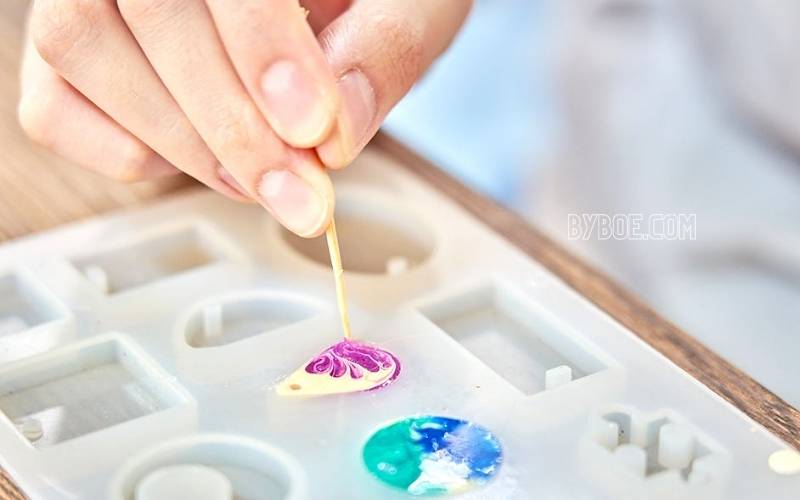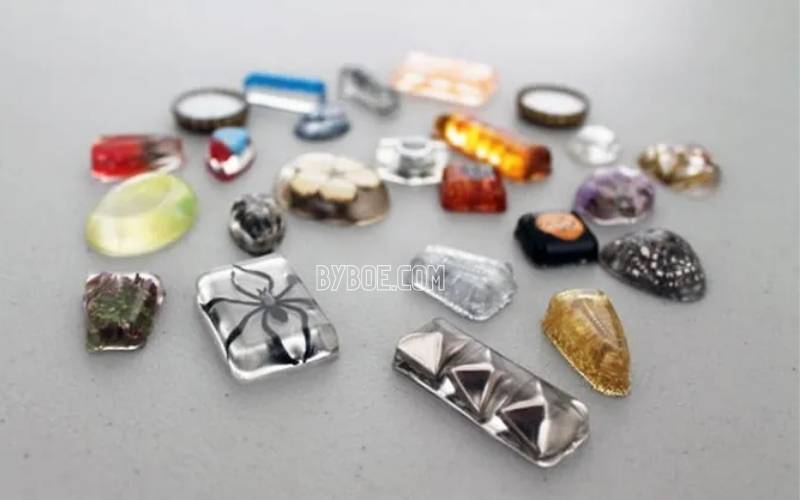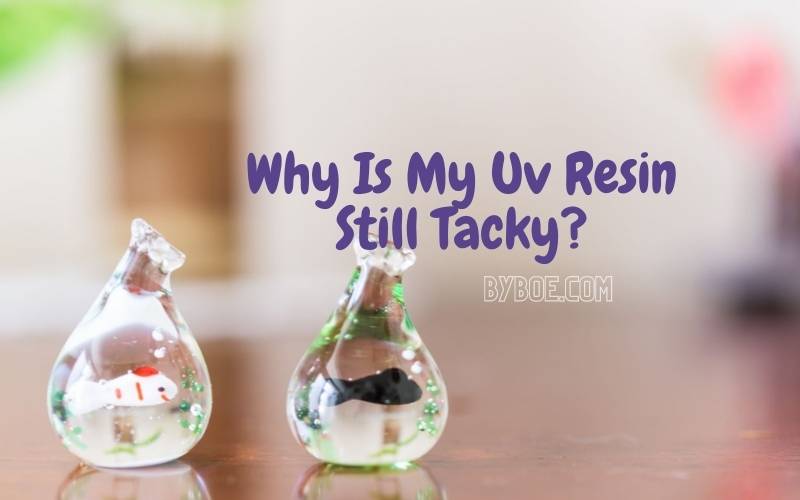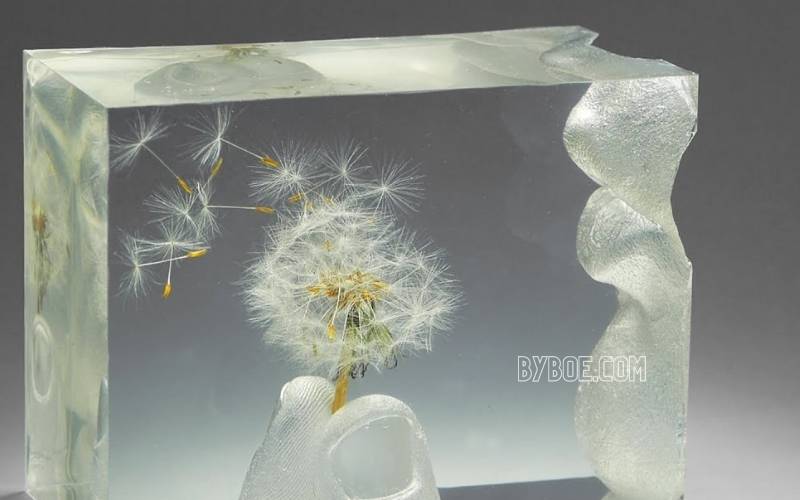One of the most frustrating things that can happen to you is when your resin remains tacky for too long, making it unusable. Any one wants to have to chuck out excellent UV resin because they waited too long to use it, and now it’s sticky instead of hard and clear.
While it can be easy to blame the manufacturer or store you purchased the resin from, in reality, there could be several factors that played a role in ruining your topcoat. Keep reading our article, Byboe will let you know Why Is My Uv Resin Still Tacky?
Table of Contents
- 1 What is UV Resin?
- 2 The Advantages and Disadvantages Of UV Resin
- 3
- 4 Causes of Sticky UV Resin After Curing
- 5 How Do You Remove Tacky Epoxy?
- 6 Can You Fix Sticky Resin?
- 7 How Do You Solidify Resin?
- 8 How Do You Fix Tacky UV Resin?
- 9 How to Prevent Tacky UV Resins
- 10 Why Is My Uv Resin Still Tacky? Conclusion
What is UV Resin?
It is essential first to understand the differences between this type of polymer and others and the proper curing that it requires.

UV Resin, a UV-activated product, cures to a robust and solid plastic after being exposed to UV Light. The UV Lamp can be used to harden it in a short time.
This type of polymer has the best properties. However, it is not easy to mix. It can also be expensive compared with the many other substances used.
It can be used in various ways, including creating Dental appliances, bottle caps, closures, and Dental Crowns.
The process is divided into two parts:
The first stage is where a UV light is directed at the resin to initiate polymerization. It’s then placed on top of the UV resin you have already spread.
Although it may sound simple, curing resin requires practice and experience.
The Advantages and Disadvantages Of UV Resin
Resin’s versatility means that it can be used in many different ways.
UV resin is excellent to use in the dental industry and other areas such as jewelry making, industrial adhesives/packaging/bonding, crafts, and graphic arts; in the automotive field and the industrial sector is one of the most significant applications over the years.
It has been used in various fields and is proving to be incredibly effective. However, there are some disadvantages that it can have. We will list them.
Advantages
- The UV resin cures quicker than a two-part resin. It takes between a few seconds and minutes.
- It is unnecessary to mix resin components, saving time and effort.
- It is easy to manage because the polymer cures only with UV light.
Disadvantages
- It is unreliable and does not last beyond six months after the cure.
- These resins are usually more expensive than regular epoxy resin.
- When working with UV resin, you must use thin layers and cure each 3 mm layer. The process can be time-consuming and tedious.
- You will need a UV lamp to cure it because direct sunlight can sometimes not be reliable.
Do you know how to cure UV resin without UV light? If not yet, let’s check out our guide right now:
Causes of Sticky UV Resin After Curing
Sometimes, when working with UV resins, there might be a tacky outer layer that remains after curing.
UV resin is sensitive to UV light and reacts with it during curing.
You might have an outer layer that remains tacky after curing if you don’t use sunlight or a UV lamp to cure your material correctly.
It is essential to apply UV light to each coat and work in thin layers.
Although there are many reasons resin can become tacky, the most common sense is that resin was not adequately treated with UV light.
This could also be due to oxygen inhibition, which is a phenomenon that inhibits UV resin from forming during curing.
The UV light air bonds with oxygen molecules interact with the UV light and limit the amount of UV energy that can penetrate deeper into the coating.
This will cause your coating to dry prematurely if it does not reach deeper layers. Because too much UV was used, oxygen inhibition can cause sticky residues.
This happens whenever free radical polymerization occurs, but there are other factors you should consider. For example, a UV resin’s ability to cure with a dry finish is solely dependent upon the coating formulation and the UV light wavelength power.
UV lamps should have a high wavelength power to leave no residue for resin cure. You should mix them well and stir until they are uniformly colored throughout.
The UV resin can be used in its raw form without mixing. However, the polymer has a shorter wavelength power and will cure sticky.
It needs heat and time to cure fully. After applying the UV resin to an object, some tackiness might be left if it isn’t exposed for enough time.
These are some ways to get rid of the stickiness problems caused by UV resin.
- The UV lamp generates heat.
- Its coating formulation and exposure time.
- To cure UV resin, the intensity of the UV lamp must be at least 4 W. A Longwave UV is the best type to cure UV resin because it penetrates deeper into objects being painted or coated.
How Do You Remove Tacky Epoxy?
- Remove any epoxy that is sticky or soft.
- Rub the area with denatured alcohol (or acetone) to remove any epoxy.
You should know the right way to clean UV resin to protect your skin, let’s check out our guide right now:
Can You Fix Sticky Resin?
If the resin mixture becomes sticky after curing, it is possible to add more resin. If the resin mixture is too runny, has uneven spots, or has tacky areas, you’ll need to take additional measures.
How Do You Solidify Resin?
The temperature in the room: For resin to fully cure, it is best to keep it at 75°F to 85°F (25°C to 30°C). The curing process may be affected if the room is colder than this.
Mix your resin and hardener for no less than three minutes. Make sure you scrape the bottom of your container.

How Do You Fix Tacky UV Resin?
As mentioned earlier, UV resin can sometimes feel tacky after curing. This can be fixed by considering the duration of heat and intensity of UV lamps.
These are just a few of the factors that can be considered if you still have tackiness problems with your UV resin after it has fully cured.
- If the surface is sticky, you can sand it off. You will get a UV resin that has a matte finish.
- You can recoat it with another layer of polymer or hardener if it feels adhesive.
- You can use light coats of acrylic or gloss sealer spray to seal the sticky surface.
- You can spray resin to give a glossy look to smaller areas.
How to Prevent Tacky UV Resins
There are many ways to avoid sticky UV resin from curing. Here’s how you do it:
- Measurement of resin and hardener accurately: must be exact.
- You are mixing the resin well or using an old resin.
- After curing resin, pay attention to humidity and moisture.
- Use a UV lamp that is more powerful and has a higher wattage.
- You can cure the resin for a bit longer and then place it in the sun to dry it. The cure time should be between 15 and 20 minutes. However, it is recommended to let it rest for three days.
Do you think we need how long does UV resin take to cure? check out our guide right now to learn more about these processes.
Why Is My Uv Resin Still Tacky? Conclusion
There could be a few reasons why your UV resin is still tacky. One reason may be that the resin is not completely cured. According to the manufacturer’s instructions, make sure to cure the resin for the recommended amount of time. Another reason may be that the surface you are working on is not clean. We hope that our article can help you learn more about this problem.


